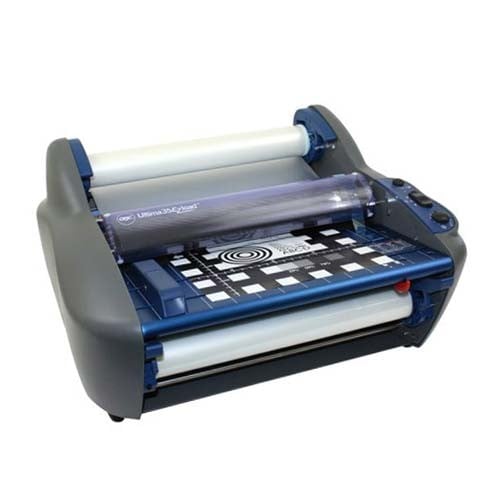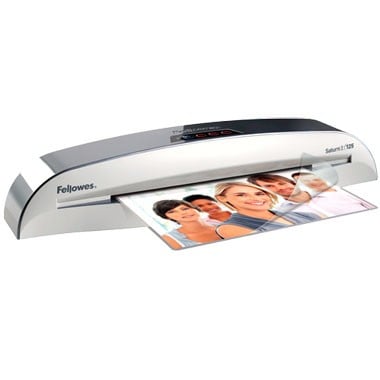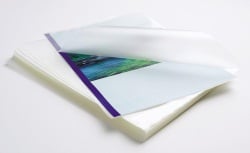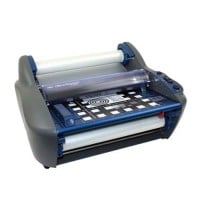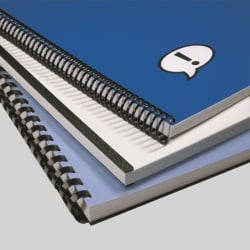MyBinding Knowledge Base
- Binding (248 Article)
- General Binding (42)
- Plastic Comb Binding (57)
- Fastback Binding (59)
- Perfect Binding (2)
- Modular Punching (8)
- Zipbind (3)
- Twin Loop Wire (13)
- Coil Binding (22)
- Thermal Binding (14)
- Strip Binding (1)
- VeloBind (4)
- Binding Covers (14)
- Proclick Binding (10)
- SureBind (4)
- Screw Post (2)
- Hole Punches (2)
- Staplers (4)
- Komtrak Insprial Binding (2)
- Paper (1)
- Rhin-O-Tuff (5)
- Binding Machines Comparison (17)
- Laminating (109 Article)
- General Laminating (26)
- Roll Lamination (16)
- Pouch Lamination (36)
- Pouch Board Laminator (3)
- School Laminator (3)
- Foil Laminating (3)
- Royal Sovereign Laminators (10)
- Laminators Comparison (3)
- Boards (11 Article)
- Bulletin Boards (3)
- Whiteboards (5)
- Chalkboards (1)
- Paper Shredders (44 Article)
- General Shredding (35)
- Industrial Shredders (1)
- Cross-Cut Shredders (2)
- Cardboard Shredders (1)
- Multimedia Shredders (1)
- Personal Shredders (1)
- High Security Shredders (2)
- Ring Binders (9 Article)
- Specialty Binders (2)
- Reinforced Paper (1)
- Health Care Punched Paper (1)
- Perforated Paper (2)
- View Binders (1)
- Index Tabs (9 Article)
- Index Tab Dividers (2)
- Copier Tabs (4)
- Pocket Folders (1)
- Custom Index Tabs (1)
- Pre-Printed Index Tabs (1)
- Paper Handling (37 Article)
- Paper Folders (9)
- Paper Joggers (2)
- Guillotine Cutters (4)
- Rotary Trimmer (3)
- Electronic Paper Cutters (1)
- Corner Rounders (2)
- Paper Scoring (2)
- Paper Drill (2)
- Booklet Makers (3)
- Stack Cutters (1)
- Paper Handling Equipment Comparison (5)
- ID Accessories (12 Article)
- Badge Holder (1)
- Lanyards (8)
- Badge Reels (1)
receive
$5off
*On order $25 or more.
What do the different Copier Tab terms mean?
Copier tabs are a type of divider specifically designed to run through high speed copiers and laser printers. They are often designed for specific Xerox or DocuTech machines. Tabs are sold in four different collation styles and have a variety of finishing options. Copier tabs are a great way to add a professional look to longer documents while keeping your materials organized. Here is a short listing of common terms associated with copier tabs.
- Bank. The bank refers to a complete row of tabs, along one edge of the document, usually the 11″ edge opposite the binding edge. Though five is the most common, banks are available in a wide variety of sizes.
- Binding Edge. The binding edge is the side of the tab that will be bound. This may or may not come reinforced, depending on your preference.
- Body Copy. This refers to any printing on the tab sheet other than the tab.
- Collation. Collation is how the tabs are ordered; tab capable machines are generally designed to handle a specific style. You can choose from reverse, straight, or uncollated. Reverse collation gives you tabs in descending order (5, 4, 3, 2, 1). Straight collated tabs appear as they would in your finished product. And uncollated gives you sets of a single tab position.
- Cut. The cut is the number of tabs in a single bank. For example, a bank of five would have 1/5th cut tabs.
- Drilling. Also referred to as punching, this denotes holes pre-punched into the sheet. Options are available for standard three-hole punch as well as holes needed for binding machines.
- Mylar. A plastic coating over the tab that provides a toner-receptive surface for printing. It also offers reinforcement, a wipe clean surface, and a variety of color options.
- Plain Tabs. Plain Tabs have no Mylar coating or lamination.
- Position. This refers to where the tab lies in the set. For example, the first position is the first tab, the second position is the second tab down, etc. This is especially relevant for uncollated tabs.
- Set. All the tabs that go into a single document. This may be in a single bank or have multiple banks. A 15-tab set in a 1/5th cut would contain three banks of five tabs each.
- Tab Extension. The Tab Extension is how far the tab sticks out from the sheet. The most common extension is ½ inch, resulting in an overall width of nine inches.
- Trilar. The trademarked name for Mylar or plastic laminate coating on the individual tabs.
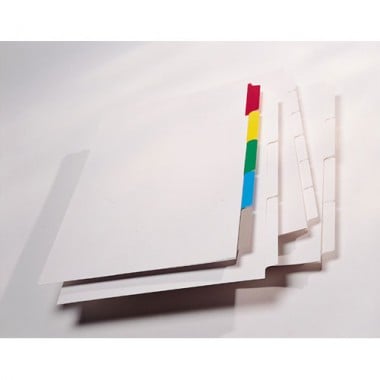
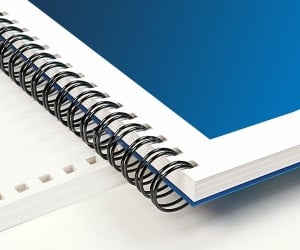
< Over the years, a number of customers have asked me whether they can use twin loop wire with their plastic comb binding machine. These customers often don’t want to have to buy a brand new machine but like the look and feel of twin loop wire binding. However, the answer to their question isn’t as simple as it seems. You see, they actually do make twin loop wire that is designed to work with the plastic comb binding hole pattern. With that said, if you want to use these wires you are going to need a way to close the wires. What is Spiral-O Wire? Let me explain a little bit more…There is a product that we carry called Spiral-O Wire. This wire has 19 loops and is designed to work with the hole pattern from a plastic comb binding machine. Spiral-O Wire is sometimes called Wire Combs or Ibico Wire and was originally designed for use with some of the older Ibico binding machines. A number of the older Ibico plastic comb binding machines also included a twin loop wire closer on the front of them to allow users to use both plastic combs and wire. This 19 loop wire was designed for this purpose. What Equipment is Needed? As the Ibico brand has been phased out by GBC and all of the older Ibico plastic binding machines have been replaced with new models, they no longer have the twin loop wire closer on the front of them. This presents a problem in trying to use these spiral-o wires since you can’t use the wires without a way to close them. One of the only options left is to purchase a Twin Loop wire closer. However, since twin loop wire closers are not incredibly cheap this option usually only appeals to users who have larger electric plastic comb binding machines. Otherwise, it is often advisable to simply buy a low end 3:1 pitch twin loop wire binding machine (the supplies are cheaper). This being said, if you have one of the older Ibico binding machines that has a wire closer included you are in luck. The Spiral-O binding supplies that we carry will work perfectly with your machine and you will be able to use both plastic combs and wire depending on your needs. These Spiral-O binding supplies are available in Black, Silver, White, Blue and Red and in sizes up to 1″ in diameter. If you aren’t sure what type of wire binding supplies that you need to work with your machine simply give us a call. Our trained sales representatives will be glad to help you find the correct supplies for use with your machine.(Read More)
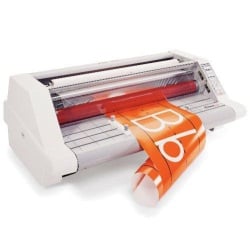

Loading...


